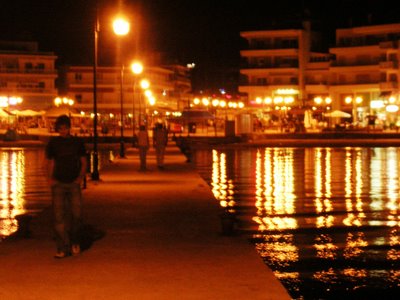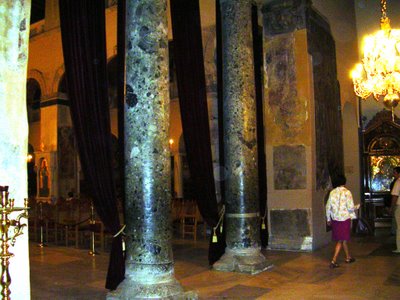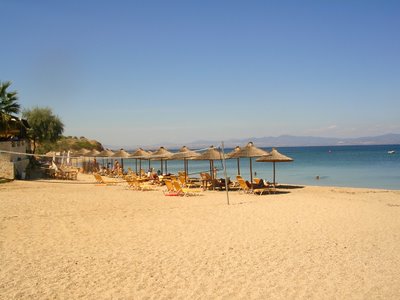
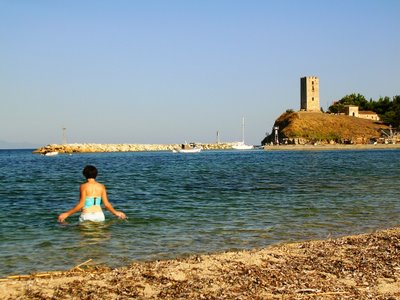 Yesterday (Wednesday) we finally went to the beach at Halkidiki. Wow, it was beautiful! The water is SO clear and warm. It was a great day!
Yesterday (Wednesday) we finally went to the beach at Halkidiki. Wow, it was beautiful! The water is SO clear and warm. It was a great day!
It's a bit of a process to get there -- a taxi or 2 buses to get to the right bus station, and then a coach bus for about 90 mins to the beach. We went to Kassandra, the first (or Western-most) arm of the Halkidiki peninsula. (Mt. Athos is the Eastern-most arm.) It was well worth it, though! It's finally starting to cool down here a little, but yesterday was sunny with the high in the low 90s. Plus, since the season is dying down, there was hardly anyone there.
The top photo is of some chairs and umbrellas that some of the psarotavernas (or Seafoood Restaurants) set up on the beach next to their restaurant. Waiters will come down and serve you coffee, beer, snacks, etc. We didn't go here, but rather we walked around to find a rather secluded beach/cove (behind the tower in the second photo).
On the hill, there is a tower and a little chapel next to it. We walked up there and took the third and fourth photos from up there. The fourth photo is of the beach where we swam.
There were just a couple people here -- a Greek man and a Serbian man who (curiously to us) communicated with each other in English. They were standing in a couple feet of water near the shore, talking, when suddenly there was some excitement and they started scooping the water up onto the shore. Apparently, a school of little sardine-like fish had swam around their legs. These are very popular to eat (especially at the Seafood Restaurants) and so they just scooped them right out of the sea. They collected them in a bag and -- I'm guessing -- went home and grilled them up. There were several snorkelers, and we saw little fish swimming by us and jumping in the water near us.

 One interesting/disturbing element of the beach experience is the, um, freedom, people feel with their bodies. Clothing is kept to an absolute minimum -- men wear speedos and some women feel tops are optional.
One interesting/disturbing element of the beach experience is the, um, freedom, people feel with their bodies. Clothing is kept to an absolute minimum -- men wear speedos and some women feel tops are optional.
Before we left, (in spite of that!) we had a little bite to eat at a psarotaverna -- fresh, lightly fried kalimari. It was really good!
As always, you can see more photos here: http://picasaweb.google.com/j.gregory.edwards
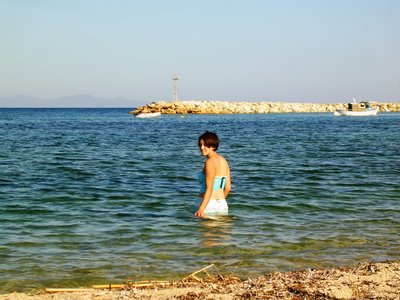
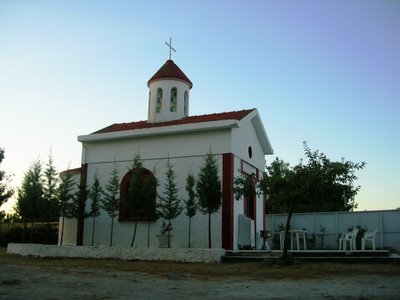

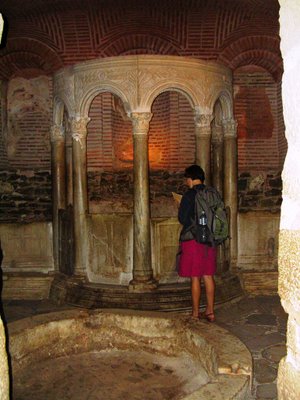



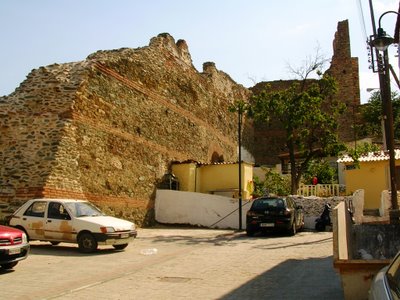


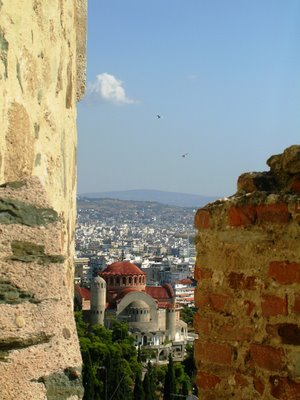
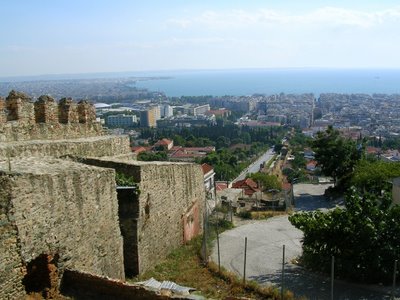
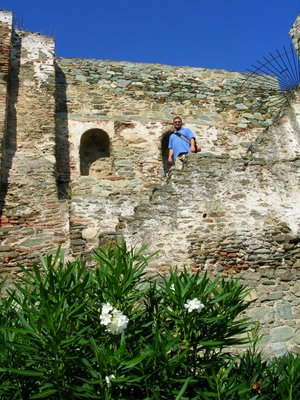

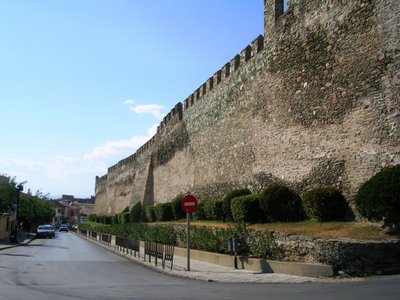

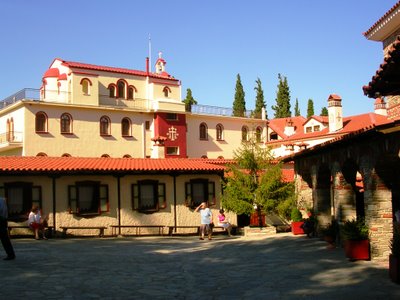

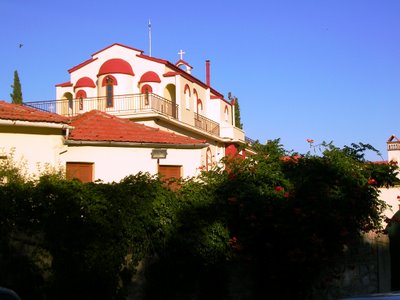











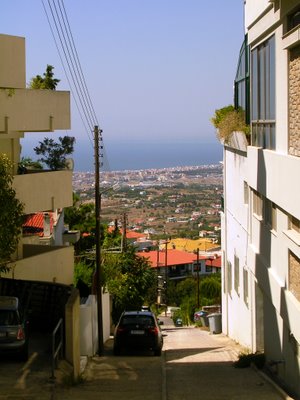

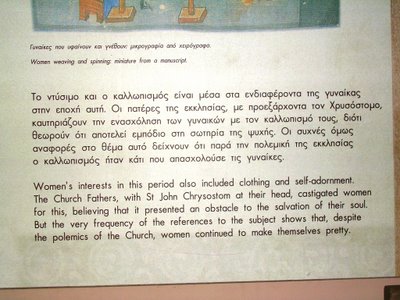





 , we decided to stop working around the house and go down to Thessaloniki to be tourists. So we took the bus from Panorama (about 30-40 min ride) and got off at the White Tower, which is a famous landmark here. It was originally part of a 15th-century seawall. The Turks turned it into a prison -- actually Death Row -- where Janissaries (soldiers pulled from the Christian population) carried out brutal executions. It was said that you could see blood dripping down the walls of the tower, so it became known as "the Bloody Tower." In 1890, prisoners whitewashed the whole structure, hence the current name. You can go inside for a tour, but unfortunately it's closed until some time next year. After we stopped there, we walked down the sidewalk which runs along the Thermaikos Gulf and turned right into Aristotle Square. There we met a German man and his two kids who were also doing the sightseeing thing. We had met them on the train to Belgrad. They were very nice, so we went to see the old Roman Agora with them and then went for a drink along the seaside. I don't know if it was a language barrier, but we THINK they told us that when they visited Albania, the kids witnessed an Albanian child being killed right in the middle of the street -- his throat was cut and he was hung up in public. Lord have mercy.
, we decided to stop working around the house and go down to Thessaloniki to be tourists. So we took the bus from Panorama (about 30-40 min ride) and got off at the White Tower, which is a famous landmark here. It was originally part of a 15th-century seawall. The Turks turned it into a prison -- actually Death Row -- where Janissaries (soldiers pulled from the Christian population) carried out brutal executions. It was said that you could see blood dripping down the walls of the tower, so it became known as "the Bloody Tower." In 1890, prisoners whitewashed the whole structure, hence the current name. You can go inside for a tour, but unfortunately it's closed until some time next year. After we stopped there, we walked down the sidewalk which runs along the Thermaikos Gulf and turned right into Aristotle Square. There we met a German man and his two kids who were also doing the sightseeing thing. We had met them on the train to Belgrad. They were very nice, so we went to see the old Roman Agora with them and then went for a drink along the seaside. I don't know if it was a language barrier, but we THINK they told us that when they visited Albania, the kids witnessed an Albanian child being killed right in the middle of the street -- his throat was cut and he was hung up in public. Lord have mercy.